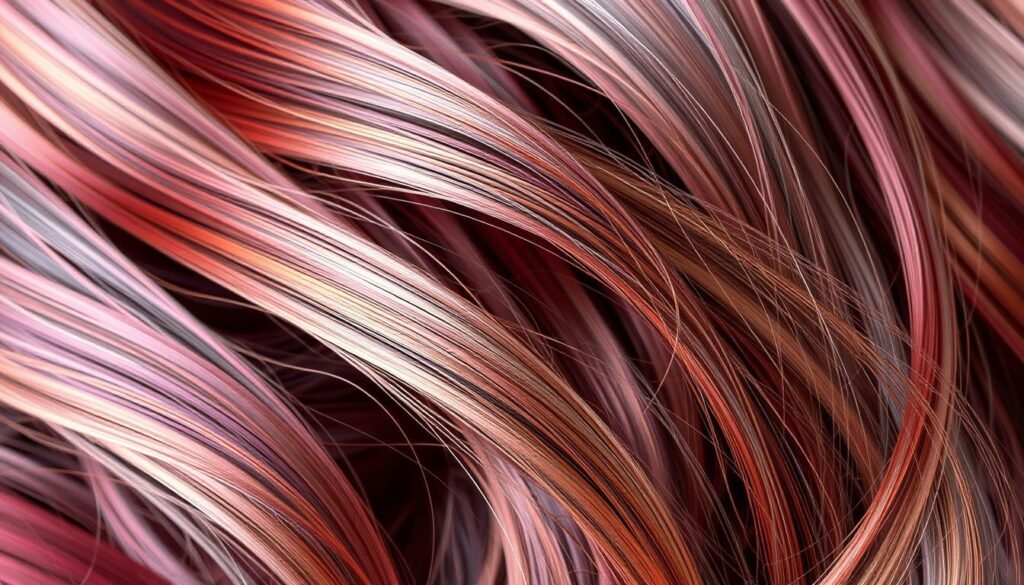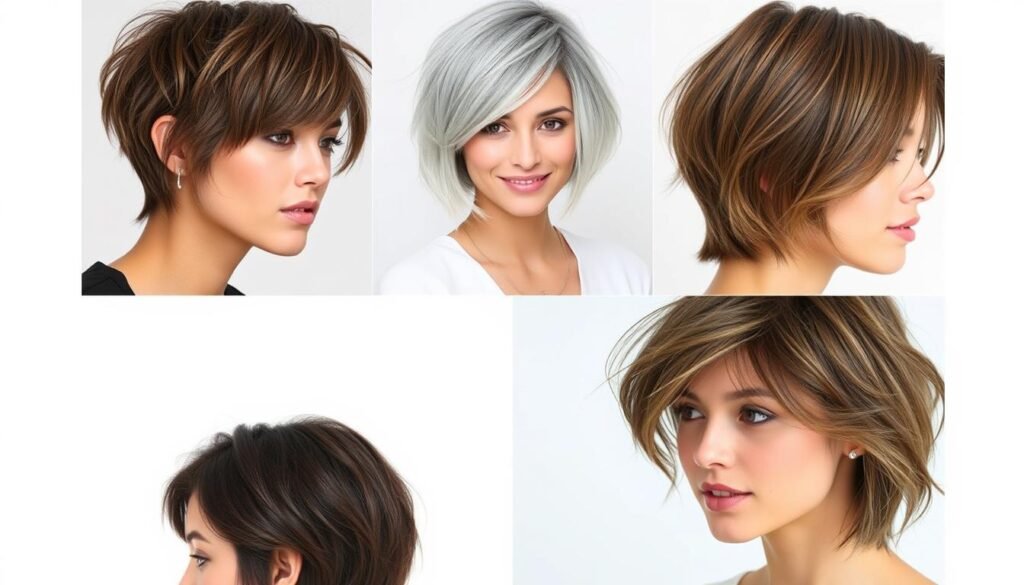Did you know that about 50% of men face hair loss by the time they’re 50? This large number shows how common receding hairlines are. They impact men and women differently, leading to various conditions. Knowing why hair loss happens can give hope. It also opens up ways for those wanting to fix their receding hairlines.
Hair loss comes from many reasons including genetics, hormone changes, and aging. We’ll explore these reasons and share treatments that work. Treatments range from drugs like minoxidil and finasteride to surgeries like hair transplants. Understanding these can help people tackle their hair loss better.
Key Takeaways
- Approximately 50% of individuals by age 50 will experience a receding hairline.
- Male pattern baldness is the most common type of hair loss.
- Genetics play a significant role in the likelihood of hair loss.
- Effective treatments include medications and surgical options.
- Consulting with a dermatologist is crucial for accurate diagnosis and treatment planning.
- Lifestyle adjustments can also impact hair health and retention.
Understanding the Receding Hairline
A receding hairline often points to male pattern baldness. This condition is mainly found in males. But, it can also happen in females as female pattern hair loss. The start is usually around the temples. It follows through seven stages on the Norwood scale. Understanding these stages is key for proper identification and treatment.
About 50% of men over 50 experience male pattern baldness. Around 80% of these cases are due to genetics. In females, the thinning is more subtle. It happens around the crown. This is different from the clear hairline retreat in men. Knowing the traits of each type helps find the cause.
A receding hairline is often seen in a man’s late teens or early 20s. By their 30s, only 5% of Caucasian men keep their youthful hairline. Age, genetics, lifestyle, and stress affect hair loss. Stress can even speed up hair thinning.
To tackle a receding hairline, treatments vary. Options range from minoxidil to hair transplants. For detailed info on maturing versus receding hairlines, check out this resource.
Common Causes of Hair Loss
It’s important to know why hair loss happens if you see changes in your hair. Androgenetic alopecia is a big reason, due to genes. It leads to hair thinning in both men and women.
Hormone changes also play a role. Issues like polycystic ovary syndrome (PCOS) can cause hair to fall out. Stress from events like childbirth or illness can also lead to more hair loss.
Diseases and treatments can cause hair to fall out too. Alopecia areata makes the immune system attack hair follicles. And treatments like chemotherapy can cause significant hair loss. Some medicines might also make hair fall out, so talking to a doctor is crucial.
How we treat our hair can also lead to hair loss. Harsh treatments or tight hairstyles damage hair over time. Understanding how hormones, genes, and lifestyle choices affect hair helps us see the full picture of hair loss.
For more details on hair loss, check out this resource. It offers information on medical conditions, treatments, and how to prevent hair loss.
Genetic Factors in Receding Hairlines
Genetics play a big part in receding hairlines. Those with family members who have lost hair likely will too. Research shows that around 80 percent of men see hair loss by 80 years. This reveals how genetics majorly influence hair loss. Studies also prove that genetics cause about 80 percent of male baldness. Genes, especially on the X chromosome, raise the risk of losing hair.
Hair loss genetics are complex. If your dad was bald, you might lose hair too. Over 80 percent of bald individuals had fathers with hair loss. Though mainly seen in men, around half of women face hair thinning by age 80. This is due to their genes too.
A big study found 63 genes linked to male baldness, with six on the X chromosome. The AR gene on this chromosome doubles baldness risk. These genes decide when and how hair loss happens.
To learn more about hair loss and its genetics, visit this in-depth guide.
Hormonal Changes and Their Impact on Hair
Hormones play a big part in hair growth and loss. In men, a hormone called dihydrotestosterone (DHT) is key in causing baldness. It’s made from testosterone by an enzyme and makes hair follicles smaller. When follicles get smaller, hair grows slower and gets thinner.
For women going through menopause, hormones affect their hair too. Lower estrogen levels during menopause make hair thinner. Estrogens like estradiol help hair grow and keep it growing longer. But when this hormone drops, hair doesn’t grow as much.
The hair growth cycle has four phases: growing, transitioning, resting, and shedding. Hormone imbalances can mess up these phases. This can cause hair to fall out sooner than it should.
Certain enzymes are also important for hair health. For example, aromatase turns androgens into estrogen. Progesterone stops DHT formation by blocking an enzyme at the hair follicle. If this balance is off, it can lead to more hair problems.
The following table shows how different hormones and enzymes affect hair:
| Hormone/Enzyme | Function | Impact on Hair |
|---|---|---|
| Dihydrotestosterone (DHT) | Converts testosterone | Causes follicle shrinkage, leading to male pattern baldness |
| Estradiol | Binds to estrogen receptors | Promotes hair follicle growth and prolongs anagen phase |
| Progesterone | Inhibits DHT conversion | Supports hair retention by preventing follicle shrinkage |
| Aromatase | Converts androgens into estrogens | Boosts hair growth potential when estrogen levels are sufficient |
Knowing how hormones and hair health connect is important. Whether it’s male baldness or menopausal hair loss, understanding hormone effects can help. It guides treatments and lifestyle choices for better hair health.

The Aging Process and Hair Thinning
The natural aging process plays a big part in hair health, leading to hair loss. Once people hit their 30s, they might see their hair change, like becoming gray and thin. Men might start losing hair at 30 and be nearly bald by 60. Women also face hair thinning, sometimes getting female-pattern baldness as they get older.
Hair thinning is often due to genetics and hormonal shifts. For women, menopause around their 40s can change their hormone levels a lot. This can make their hair less dense. The hair follicles don’t make new hair as well, making aging and hair thinning a common worry.
- Hereditary traits
- Endocrine and thyroid disorders
- Reduced hormonal support
- Nutritional deficiencies
- Medications for chronic conditions
Many people find their hair grows slower, about half an inch a month, and it might slow down with age. The hair products we use, especially those with parabens and phthalates, could also affect hair density.
If you’re worried about keeping your hair healthy, talk to a healthcare pro for advice. Taking multivitamins might help keep your hair healthy. You can find more on managing hair loss here. There’s also info on treatments like Olumiant for alopecia here.
| Age Range | Common Hair Changes |
|---|---|
| 30s | Beginning of graying, possible signs of baldness in men |
| 40s | Menopause in women, hormonal changes affecting hair density |
| 50s+ | Increased prevalence of baldness, thinning hair in men and women |
Diagnosing a Receding Hairline
Diagnosing hair loss starts with a visit to a dermatologist. The dermatologist will look at your medical history and check your scalp closely. Knowing the hair loss patterns helps find out why the hairline is receding.
A pull test might be done to see how easily hairs fall out. This shows the health of the scalp. Scalp biopsies may check for infections or other issues causing hair loss.
Blood tests are also key to find health problems like hormonal imbalances that lead to hair loss. These tests help create a detailed understanding of the patient’s hair loss, setting the stage for tailored treatments.
Identifying the reasons behind hair loss is important for treatment. For example, noticing the early signs of androgenetic alopecia, like the hairline moving back above the temples, is crucial. This knowledge leads to better ways to handle hair loss.
Medications for Receding Hairlines
Knowing the top meds for hair-loss can really help those with a receding hairline. The two main treatments, minoxidil and finasteride, cater to different needs. They help restore hair at various stages.
Minoxidil: A Popular Treatment Option
Minoxidil is a great medication for hair loss that you can buy easily. It comes in liquid or foam, and it boosts blood flow to your hair roots. This helps a lot when you begin to lose your hair. Using it regularly can make your hair look fuller and healthier.
Finasteride: An Oral Solution
Finasteride is an oral medication that the FDA approved. It fights hair loss by blocking a hormone known to cause baldness. This drug can slow down hair loss and might even bring back some hair. But, talk to a doctor first, as it can have side effects.
Non-Medication Solutions for Hair Loss
Looking for ways to address hair loss without medication can be both rewarding and innovative. Many non-medical approaches exist for managing hair loss. These methods range from choosing hairstyles that make thinning less visible to making important changes in your life. Such strategies can improve your confidence and hair health.
Hairstyles to Conceal Thinning Hair
Choosing the right hairstyle can greatly hide thinning spots. Consider these styling options:
- Undercut: Offers striking contrast, making thin areas less obvious.
- Buzz Cut: A neat buzz cut helps in reducing the look of hairline receding.
- Textured Crop: Texture adds volume for a fuller appearance.
- Longer Layers: These layers can stylishly cover up thinning sections.

Lifestyle Adjustments to Support Hair Health
Lifestyle changes can greatly benefit your hair’s health. Consider making these important adjustments:
- Balanced Diet: Eating foods full of biotin, protein, and zinc aids hair growth.
- Regular Exercise: Activity combats stress, a known factor in hair loss.
- Stress Management: Lowering stress through meditation or relaxation protects against thinning.
- Hydration: Good hydration is key to maintaining overall health and vibrant hair.
By considering these non-medication approaches, you can better manage hair loss. These tips will not only improve how your hair looks but also its health. Making thoughtful lifestyle changes plays a big role in this process.
Hair Transplant Surgery: A Long-Term Solution
Hair transplant surgery is a good choice for those wanting permanent hair restoration. It has been effective in the U.S. since the 1950s. Patients have two main options: Follicular Unit Strip Surgery (FUSS) and Follicular Unit Extraction (FUE). Follicular unit extraction is often chosen for being less invasive, though it costs more than FUSS.
The price for hair transplant surgery varies between $4,000 and $15,000. Since most insurance plans don’t cover these costs, it’s important to think carefully about your choices. After the procedure, many can go back to work in 2-5 days. This shows the recovery time is usually short.
After surgery, it’s common for transplanted hair to fall out within 2-3 weeks. But, new growth should be visible in a few months. Hair transplants aim to be lasting solutions. Yet, some grafts may not make it through the initial healing. A study found that a single procedure is often enough for satisfying outcomes in 68% of cases.
For those thinking about hair restoration, especially if they fall under Norwood Scale 4a/5/5a/6, detailed planning is crucial. More people aged 20-27 years are now opting for hair transplant surgery. It can bring back a youthful hairline. Surgeons usually suggest a mature hairline that considers future hair growth.
Using medications like Finasteride can also support hair transplant results by slowing hair loss. Discussing with a dermatologist is wise to see if this fits your hair goals.
Other Treatments and Options for Hair Restoration
People looking for non-traditional hair restoration have many options. Platelet-Rich Plasma (PRP) therapy is a top choice. It boosts hair growth by using the body’s platelets.
Low-level laser therapy uses special lights to help restore hair. It’s good for improving scalp health too.
Platelet-Rich Plasma Therapy
PRP therapy involves taking a bit of blood, processing it, and then putting it back into the scalp. This might help hair grow in thin areas. Lots of studies say PRP therapy works well, making it a great choice for natural hair restoration.
Low-Level Laser Therapy
This cool method uses lasers to wake up hair follicles. Research shows it could make hair thicker and regrow in bald spots. It’s easy and doesn’t require surgery, which many people like. Users often see good results, making it a popular hair fix solution.

Conclusion
A receding hairline affects many people but can be handled effectively. Knowing the root causes, like genetics, hormones, and aging, helps find solutions. Consulting dermatologists can provide personalized treatment plans.
Treatments include medicines like minoxidil and finasteride, and non-medical options. Improving diet and reducing stress support hair health. Scalp massages enhance blood flow, helping fight hairline recession.
Thanks to new technology, hair restoration has become more accessible. Experiencing hair loss? Consider all options. Acting early and using full treatment approaches improve hair health and life quality.